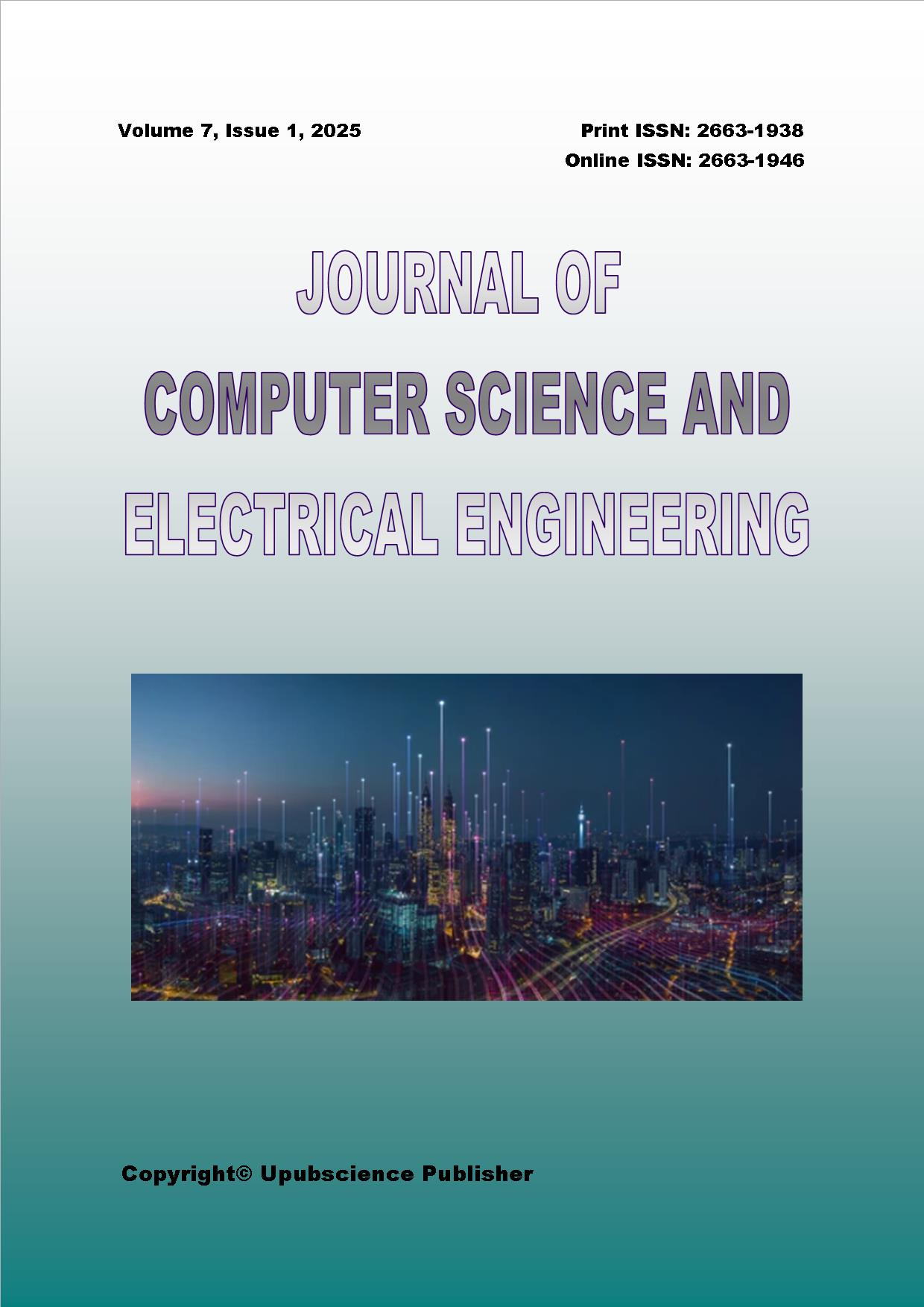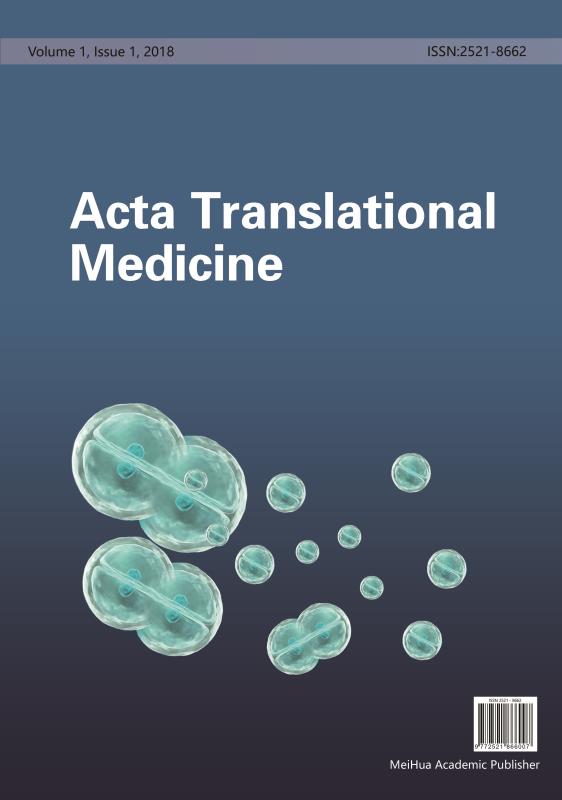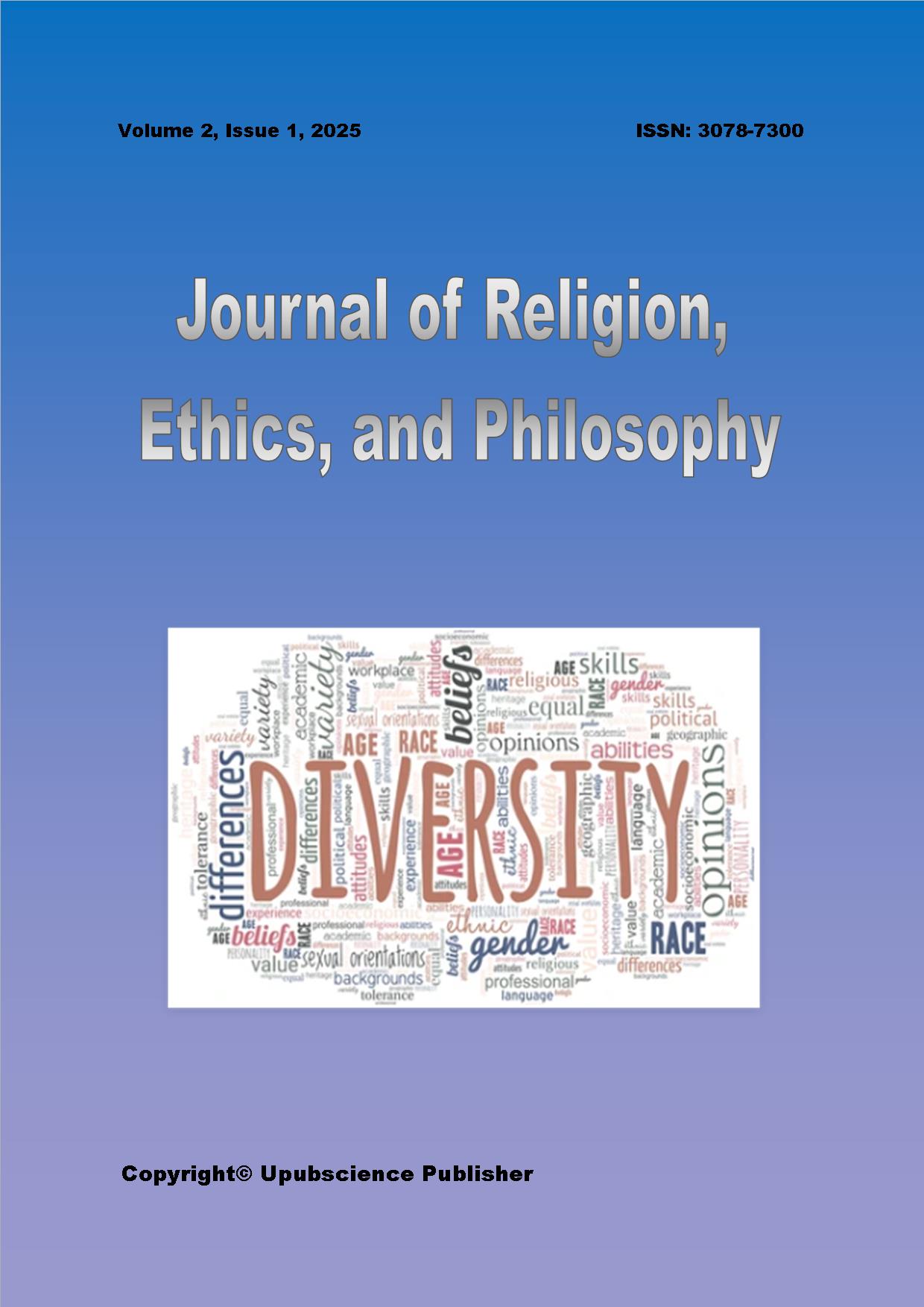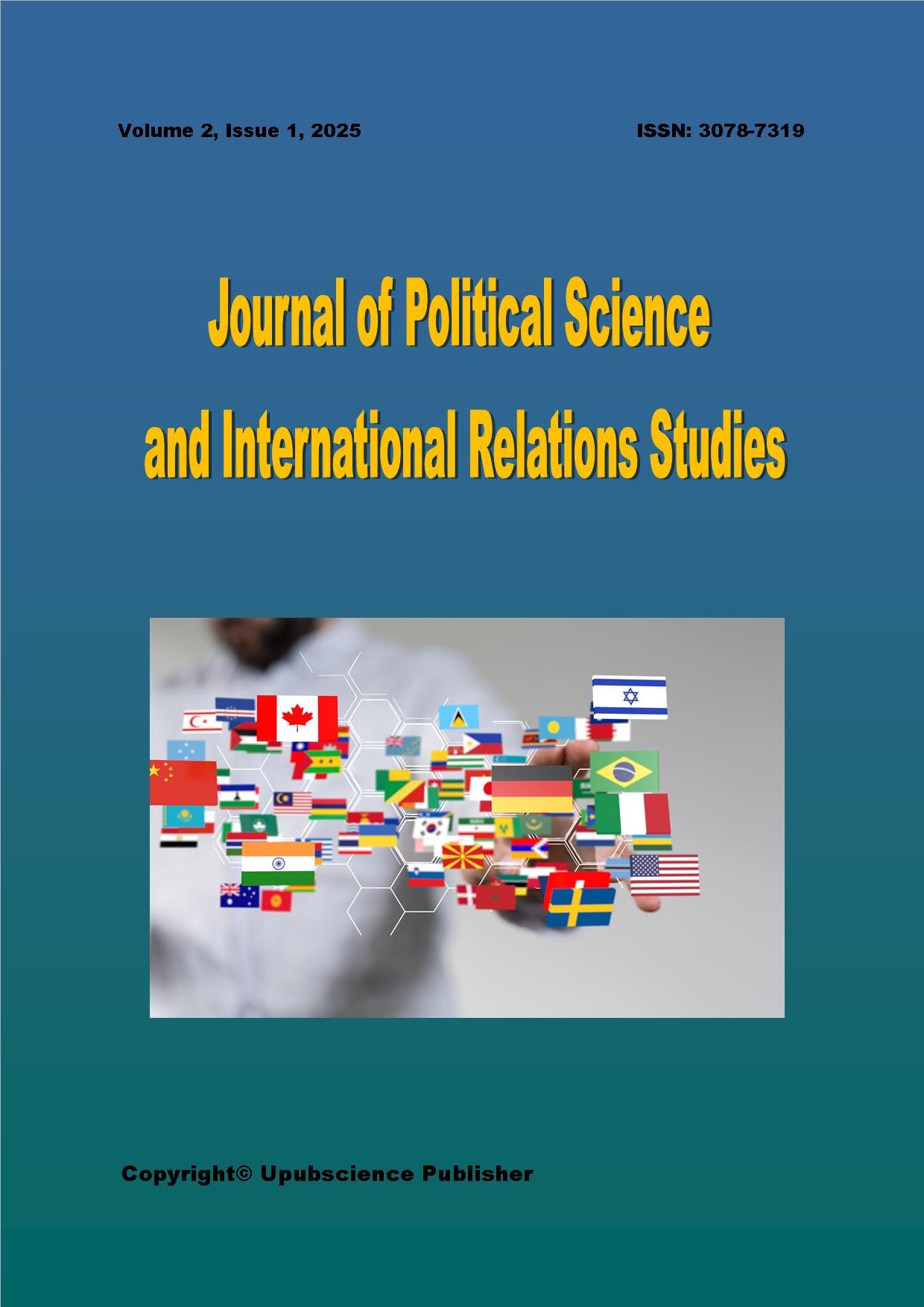
Journal of Computer Science and Electrical Engineering
Print ISSN: 2663-1938 Online ISSN: 2663-1946
Authors' Guidelines
Manuscripts submitted to Upubscience should neither be published previously nor be under consideration for publication in another journal. The main article types are listed below and a comprehensive list of article types can be found here.
Article: These are original research manuscripts. The work should report scientifically sound experiments and provide a substantial amount of new information. The article should include the most recent and relevant references in the field. The structure should include an Abstract, Keywords, Introduction, Materials and Methods, Results, Discussion, and Conclusions (optional) sections, with a suggested minimum word count of 4000 words.
Review: Reviews offer a comprehensive analysis of the existing literature within a field of study, identifying current gaps or problems. They should be critical and constructive and provide recommendations for future research. No new, unpublished data should be presented. The structure can include an Abstract, Keywords, Introduction, Relevant Sections, Discussion, Conclusions, and Future Directions, with a suggested minimum word count of 4000 words.
All manuscripts and any supplementary material should be submitted via the Submission System or to the respective journal email address: jcsee@upubscience.com or editor@upubscience.com
An original article would normally consist of 3000-7000 words (excluding figures, tables, and references), although high-quality articles which exceed 7000 words will be considered.
All articles must be written in English, using UK spelling and terminology. The text and English language in new and revised articles must be checked, edited and corrected by the authors, preferably with the help of a native English speaker.
Submissions may be formatted in single or double spacing, preferably in Times New Roman size 10 font. All accepted articles will be correctly formatted for publication.
The text of the article should include the following:
Title
Author(s)
Affiliation(s)
Abstract
Keywords
Text body
References and notes
Tables, figure captions and figures
Template (Word) for all journals is available here, should you wish to use. Although the templates will allow you to estimate the total number of pages if typed in single-line spacing, it is not essential that you use one, since all accepted articles will, as stated above, be correctly formatted for publication by Upubscience Publisher.
Title, Abstract, Keywords, Addresses
Title, author(s), and affiliations should all be included on a title page as the first page of the manuscript file, followed by a 100-300 word abstract and 3-5 keywords. The order they follow is: Title, Authors, Affiliations, Abstract, Keywords.
Title: as short as possible, with no uncommon abbreviations or acronyms.
Abstract: should be factual and precise and less than 100-300 words.
It needs to briefly cover the aim of your research, the methodologies used and what you concluded.
Avoid including references. If essential, then cite the author and year.
Avoid using uncommon abbreviations. If unavoidable, then define at the first mention in the abstract.
Use any relevant keywords to improve the findability of your paper in online search engines and indexes.
A well-constructed abstract is important as it will attract readers to your paper.
Keywords: approximately 3-5 words or phrases. Keywords are important for online searching.
Address*: position, department, name of institution, full postal address and email address for each author.
Figure and table requirement:
All figures or photographs must be submitted as jpg or tif files with distinct characters and symbols at 500 dpi (dots per inch). Test your figures by printing them from a personal computer. The online version should look relatively similar to the personal-printer copy. Tables and equations should be in an editable rather than image version. Tables must be edited with Word/Excel. Equations must be edited with Equation Editor. Figures, tables and equations should be numbered and cited as Figure 1, Figure 2, Figure 3, etc. in sequence.
References format
All works cited in the text with square brackets must be included in the References section at the end of the article.
Footnotes should be avoided, but any short, succinct notes makin a specific point may be placed in number order following the list of references.
References should be made only to works that are published, accepted for publication (not merely "submitted"), or available through libraries or institutions. Any other source should be qualified by a note regarding availability.
All reference sources must be written in English.
The full reference should include:
All authors' names and initials
Date of publication
Title of article
Title of publication
Volume and issue number (of a journal)
Publisher and form (for books and conference proceedings)
Page numbers
DOI (Digital Object Identifier), if available.
For websites or internet-based resources, also add accessed day month year (the date you last viewed the article), URL or internet address.
Authors must ensure that any URLs included in references are valid, and should provide a shortened version of the URL if the original is longer than 90 characters.
To shorten, include the main site (domain name) details only. Do not use a link shortener.
e.g. https://www.semanticscholar.org/ instead of https://www.semanticscholar.org/paper/Analysis-of-oncogenic-signaling-networks-in-ASPM-as-Horvath-Zhang/ad3d83fad8605bddbae8ea7948e54f792eff1b55
More examples of references may be found in sample articles available from all journal homepages.
Please use the Numeric Referencing System which uses numerals in the text with a detailed numerical list at the end of the paper. For example, '...Horvath's [1] research supported the earlier findings of Hert [2] highlighting the probability of the results in this area to be true...'
Translated Works
Difficulty often arises in translating acronyms, so it is best to spell out an acronym in English.
Similarly, labels and suffixes need careful attention where the letters refer to words which have been translated.
The names of mathematical functions may change in translation - check against an English or American mathematical reference text.
Peer review is the major quality maintenance measure for any academic journal. In this process, experts in the relevant fields analyze the scholarly work from every perspective, including its writing, the accuracy of its technical content, its documentation, and its impact on and significance to the discipline.
Reviewers play a pivotal role in scholarly publishing, and their valuable opinions certify the quality of the article under consideration. Peer review helps to ratify research, establishing a standard for evaluation within research communities.
Upubscience adheres to the principles of Creative Commons Attribution license, meaning that we do not claim copyright of the work we publish. All articles are published under a CC BY-NC-ND license and authors conserve their publishing rights.
Download the Template: ![]() Upubscience Publisher_Template.docx
Upubscience Publisher_Template.docx
CURRENT STATUS AND DEVELOPMENT TRENDS OF SATELLITE IOT
Hao Qi*, ZaoXia Ma
Abstract | References | PDF | HTML | XML
Volume 7, Issue 5, Pp 26-33, 2025
HongFu Zeng, ZhaoMin Liang*, FanRui Wei, YiXun Lu
Abstract | References | PDF | HTML | XML
Volume 7, Issue 5, Pp 13-25, 2025
BEYOND EXTERNAL CONTROL: HYPERNETWORK-DRIVEN PARAMETER EDITING FOR MULTI-MODAL IMAGE GENERATION
Hao Chen
Abstract | References | PDF | HTML | XML
Volume 7, Issue 5, Pp 1-12, 2025
Qiang Zeng*, YiDan Chen
Abstract | References | PDF | HTML | XML
Volume 7, Issue 4, Pp 66-73, 2025
ENHANCING THE YOLOv11 MODEL FOR TEACHING BEHAVIOR RECOGNITION
Yao Tian, Cheng Peng*
Abstract | References | PDF | HTML | XML
Volume 7, Issue 4, Pp 60-65, 2025
YuXin Cheng
Abstract | References | PDF | HTML | XML
Volume 7, Issue 4, Pp 47-59, 2025
OPTIMIZATION STRATEGIES FOR WIRELESS COMMUNICATION NETWORKS BASED ON MACHINE LEARNING
ZiXuan Wu
Abstract | References | PDF | HTML | XML
Volume 7, Issue 4, Pp 43-46, 2025
DESIGN OF A MICROCONTROLLER-BASED SMART BLIND CANE
WenHao He*, GuangBo Su, ZhiJie Wang, ShuMing Li
Abstract | References | PDF | HTML | XML
Volume 7, Issue 4, Pp 37-42, 2025
FOREST FIRE POINT RECOGNITION BASED ON SUPER-RESOLUTION TECHNIQUES
FuLin Li, WenFa Xu*, Zhen Min, XuePeng Wu, ChangYu Xiang, YuDong Liu
Abstract | References | PDF | HTML | XML
Volume 7, Issue 4, Pp 29-36, 2025
EXPLORING THE PATH OF VALUE NETWORK EMPOWERING THE TRANSFORMATION OF UNIVERSITY TEACHING EVALUATION
Chu Sun
Abstract | References | PDF | HTML | XML
Volume 7, Issue 4, Pp 25-28, 2025
Indexing
All manuscripts will be submitted for indexing to major indexing services, including:
CNKI, Google Scholar and CrossRef.

Aims & Scope
Journal of Computer Science and Electrical Engineering (Print ISSN: 2663-1938 Online ISSN: 2663-1946) is a peer-reviewed journal that publishes original research articles as well as review articles in several areas of Computer Science and Electrical Engineering.
It is published by UPUBSCIENCE Publisher. It supports the open access policy of making scientific research accessible to one and all.
JCSEE publishes papers that report advances from across the rapidly moving fields of both Computer Science and Electrical Engineering. Reflecting the prevalence of electrical systems and devices both in our everyday lives and in advanced technological environments, the journal welcomes submissions relating to their implementation in all settings and industries. Studies may relate to the design, production, operation, and testing of electrical devices and systems, or the engineering of their hardware, software and networking. JCSEE receive the following subject areas but not limit to:
Computer Science, general
Software Engineering
Theory of Computation
Data Structures and Information Theory
Artificial Intelligence
Information Systems Applications
Editorial Board
Editor in Chief
Benyamin Ahmadnia, University of California, Davis (USA)
Associate Editor
Li, Lin, University of North Texas, USA
Wang shuo, University of Alberta, Canada
Assistant Editor
Sullivan Florence, University of Massachusetts, USA
Managing Editor
Kuo Tung Ueng, 4th Avenue South West, Altius Centre, Suite 2500, Calgary, Canada
Editorial Board Members
Sánchez Jaime, University of Chile, Chile
Slotta Jim, University of Toronto, Canada
Sullivan Florence, University of Massachusetts, USA
Tamura Yasuhisa, Sophia University, Japan
Vidal Gérard, ENS de Lyon and IFé, France
Mason Jon, Charles Darwin University, Australia
Yin Chengjiu, Kyushu University, Japan
Wegerif Rupert B., University of Exeter, UK
Mustafa ZKAN, Trakya University, Turkey
Masoud Rahiminezhad Galankashi, Universiti Teknologi Malaysia(UTM), Malaysia
HIMA SURESH, M.G University, India
N.THILLAIARASU, SNS College of Engineering, India
Benyamin Ahmadnia, Tulane University, USA
Prem Kumar Singh, Gandhi Institute of Technology and Management-Visakhapatnam, (Deemed to be University), India
Megha Bhushan, Chitkara University, India
Miguel José Vivas Cortez., Pontificia Universidad Católica del Ecuador, Ecuador
Mohammad Younus Bhat, Islamic University, India
MUHAMMAD RASHID, Umm Al-Qura University, Saudi Arabia
Neeraj Kumar Rathore, Indira Gandhi National Tribal University (IGNTU) Amarkantak, India
ZAHID KHAN, Hazara University Mansehra Pakistan, Pakistan
Guoyang Liu, Pokfulam Road, Hong Kong, University of Hong Kong, Hong Kong, China
NAZIR ULLAH, Nanjing University, China
Xuesong Dai, Wuxi University, China
Dexian Wang, Southwest Jiaotong University, China
Yan Wang, The Hongkong Polytechnic University, China
Xiaofen Fang, Quzhou College of Technology, China
Xinyue Mo, Hainan University, China
Ahmadreza Montazerolghaem, University of Isfahan, Iran
Gokhan Bakal, Abdullah Gul University, Turkey
Shashi Kant Gupta, Eudoxia Research University, USA
Kiran Siripuri, KITS Warangal, India
Yattou Elfadili, Sidi Mohamed Ben Abdellah University, Morocco
AZZAD BADER SAEED, Electrical Engineering Department, University of Technology, Iraq
Sunandan Barman, Production Engineering, Meta, USA
Prashant Gupta, Department of Software Development, Amazon, India
Yiliang Guo, Georgia Institute of Technology, Georgia, USA
Zhibo Wang, Fudan University, China
Yujie Liufu, Quality & Metrology Supervision Testing Institute, Maoming, Guangdong, China
Mengyao Dong, NIST, USA
Publication Fees
All articles published in our journals and proceedings are open access and freely available online, immediately upon publication. We guarantee that no university library or individual reader will ever have to buy a subscription or pay any pay-per-view fees to access articles in the electronic version of our journals and proceedings. This is made possible by Article Process Charges (APCs) 800 USD that covers the range of publishing services we provide. This includes provision of online tools for editors and authors, article production and hosting, liaison with abstracting and indexing services, and customer services.
APCs are due when a manuscript has been accepted for publication. Following peer review, once a manuscript has received editorial acceptance in principle, the APCs becomes payable and formatting checks on the manuscript will commence. Once formatting checks are completed, and payment of the APCs has been received, the article will be published.
The authors must pay an additional fee for mailing and printing costs if the journal's hardcopy is needed. It is a flat fee that does not vary based on word count or use of color figures.
Subscription
Call for Special Issue
Publication Ethics & OA Statement
Publication Ethics Statement
The publication of an article in a peer-reviewed journal is an essential building block in the development of a coherent and respected network of knowledge. It is a direct reflection of the quality of the work of the authors and the institutions that support them. Peer-reviewed articles support and embody the scientific method. It is therefore important to agree upon standards of expected ethical behavior for all parties involved in the act of publishing: the author, the journal editor, the peer reviewer, the publisher and the society of society-owned or sponsored journals.
Please see here for the publication ethics and malpractice statement. Upubscience publisher adheres to (COPE). Please click here for the code of conduct statement we apply (COPE).
Authors should be aware of a possible Conflict of Interest. In such a case authors can still take responsibility for the accuracy of their paper, but must inform the reader with an appropriate statement in the Acknowledgements.
Open Access Statement
All articles from Journal of Computer Science and Electrical Engineering (JCSEE) have "free availability on the public internet, permitting any users to read, download, copy, distribute, print, search, or link to the full texts of these articles, crawl them for indexing, pass them as data to software, or use them for any other lawful purpose, without financial, legal, or technical barriers other than those inseparable from gaining access to the internet itself." (From the BOAI Definition of Open Access).
Plagiarism Policy
Upubscience publisher is committed to maintaining high standards through a rigorous peer-review together with strict ethical policies. Any infringements of professional ethical codes, such as plagiarism, fraudulent use of data, bogus claims of authorship, should be taken very seriously by the editors with zero tolerance.
An Initial Plagiarism Check is carried out for every manuscript submitted to us. Upubscience publisher is a member of Turnitin and has added all its papers to the Turnitin database. In this way, also other publishers can compare their manuscripts with Upubscience publisher's papers.
The submitted manuscript should not have been previously published in any form and must not be currently under consideration for publication elsewhere.



